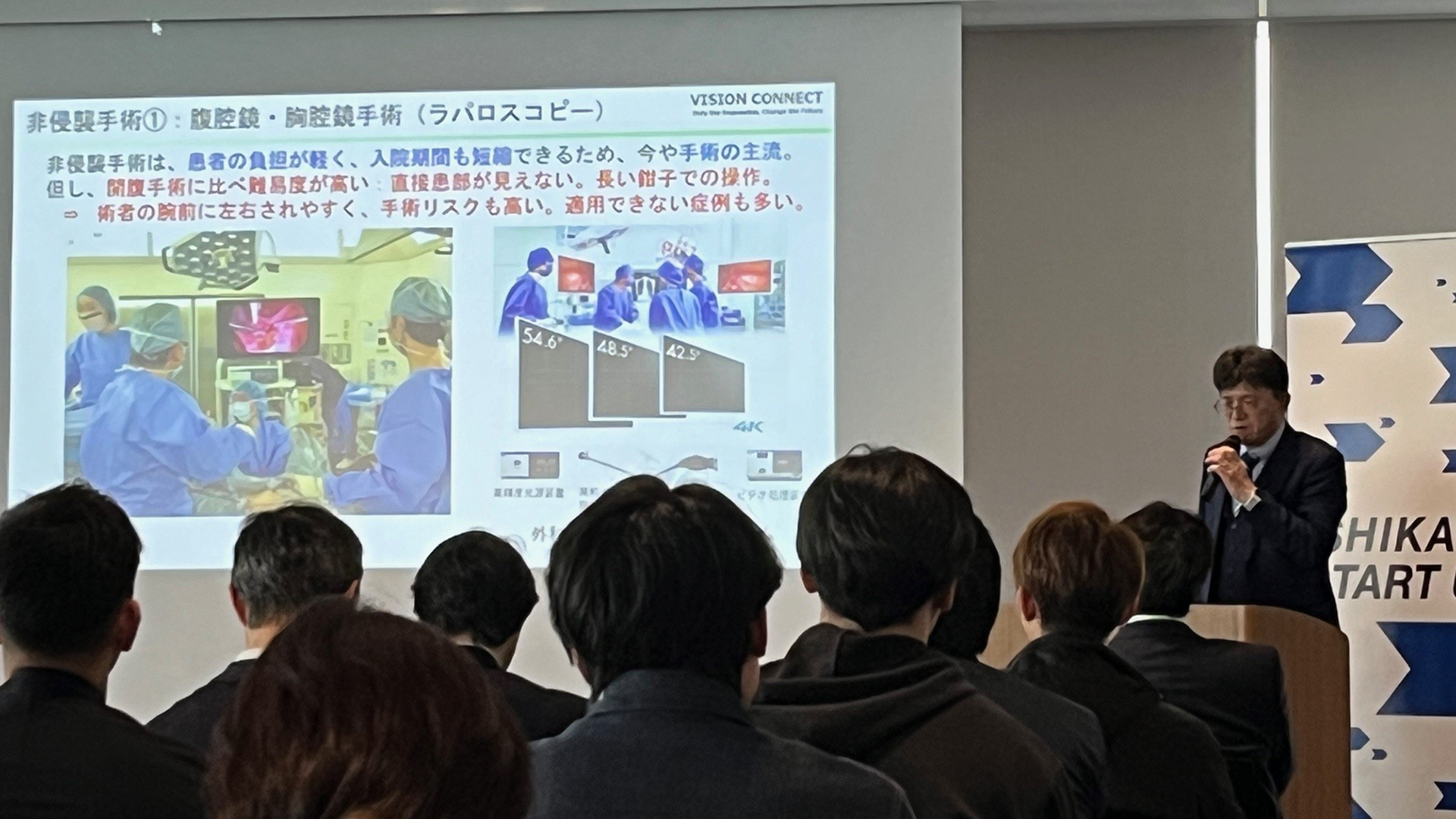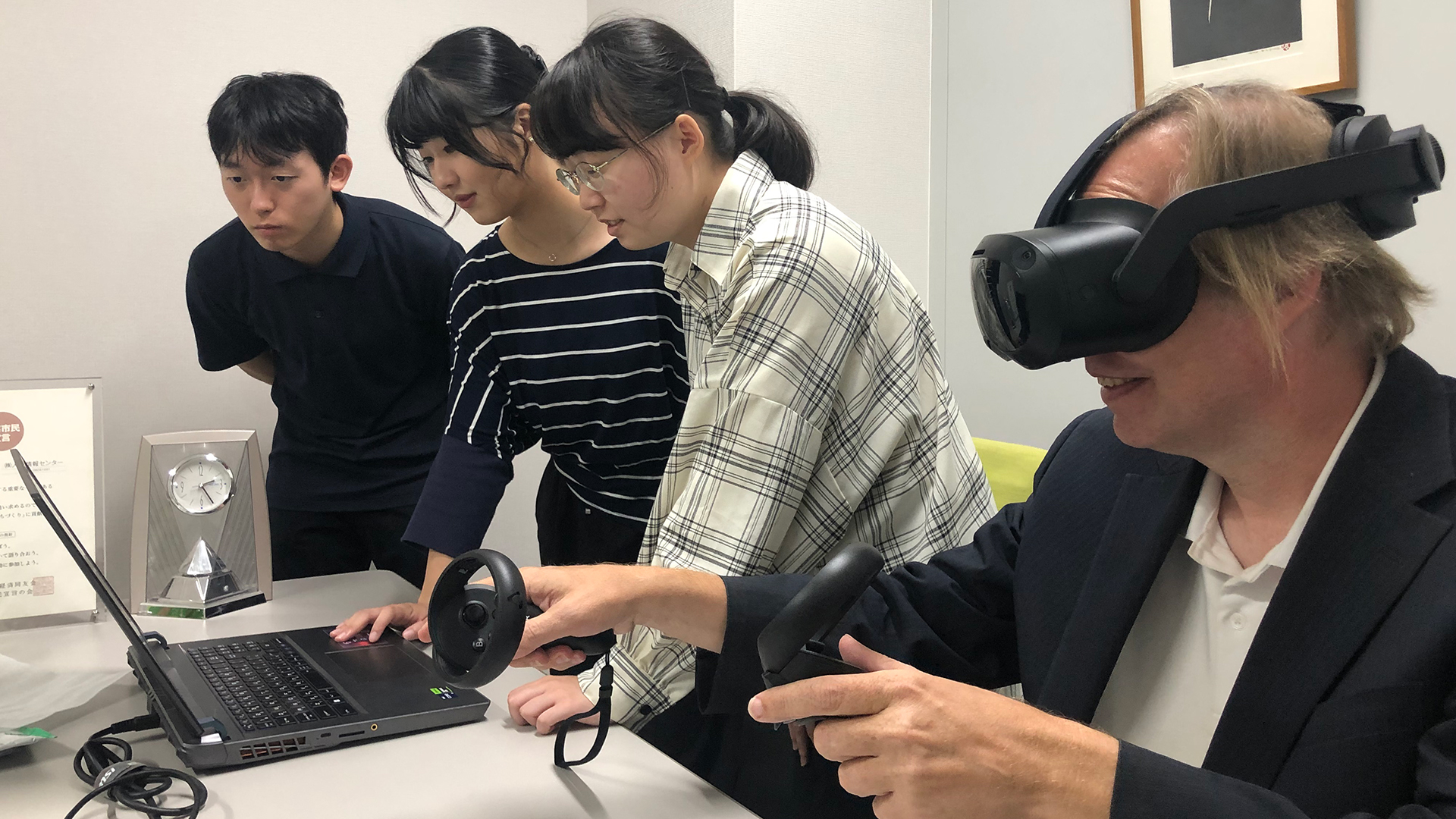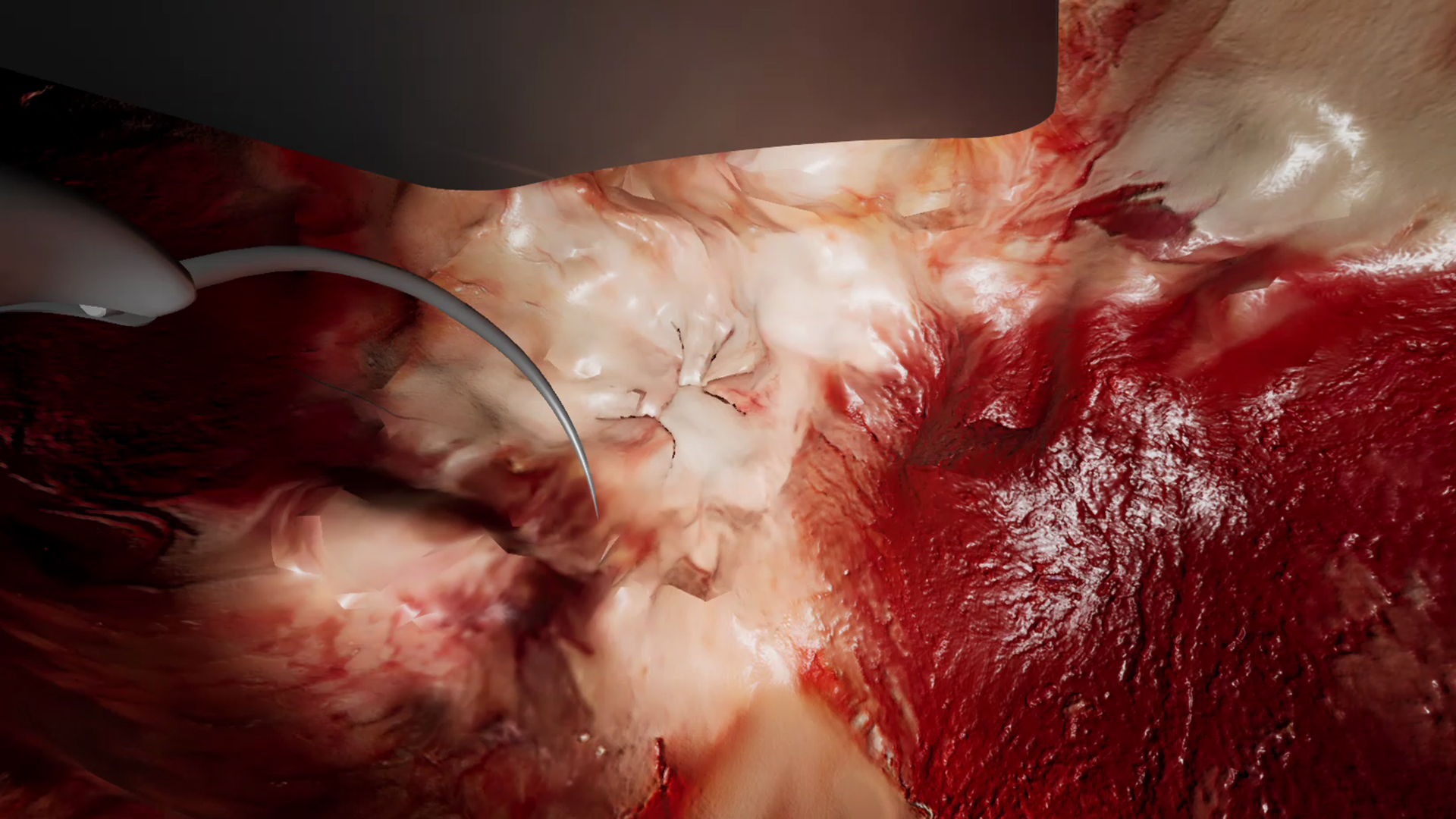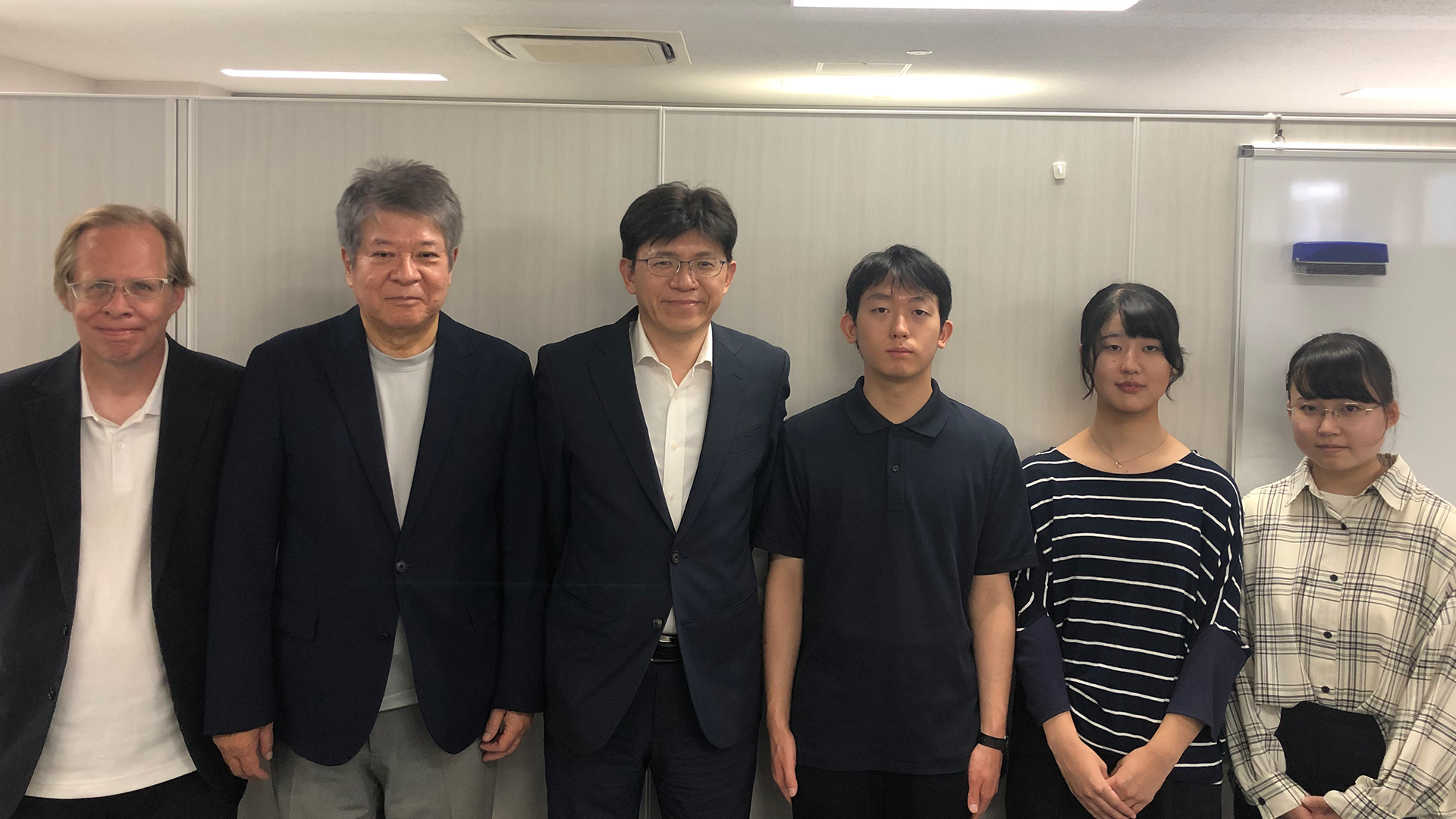- TOP
- About
- Affiliated League
- Information
- League Members
- Partners
- League Report
Search League Members
-
公式X
Vision influences about 70% of brain activity—
Vision Connect Inc. has focused on this intriguing fact. Based on the neuroscience of how the brain perceives 3D space, they have pursued even greater reality than conventional 3D technology, developing the cutting-edge 3D display technology 'SR3D (Super Real 3D).'
'SR3D,' capable of reproducing the visual real world, is expanding into various fields, including medicine for surgical operations and treatment of various diseases, as well as education, industry, and entertainment. By solving the challenges of modern society, President and CEO Masayuki Ota is building the metaverse he envisions, where everyone can live happily.
 Mr. Masayuki Ota giving a lecture
Mr. Masayuki Ota giving a lectureI hear your family runs a local factory in Gifu Prefecture. Has that influenced your current work in any way?
Ota: I grew up in a family that manufactured automotive parts in the heart of Toyota country, so I've been very interested in manufacturing since I was a child. I was particularly fascinated by things that move, and I dreamed of one day creating robots and androids like Doraemon, Baymax, or the Armaroid Lady from Cobra that I saw in anime—companions that would stand by the human protagonist and support them both mentally and physically.
However, when I was in high school, there were no universities with robotics engineering departments, so I majored in electrical and electronic engineering. After graduating from graduate school, I joined Hitachi, Ltd. I had always wanted to start my own business since I was young, but I thought it would be better to first join a company and gain a variety of social experiences.
What kind of projects were you in charge of?
Ota: I was assigned to a department that researched and developed liquid crystal displays, where I was involved for about 10 years in everything from basic research to product development for 'IPS LCDs,' which are now the de facto standard and were a world first.
What exactly is an 'IPS LCD'?
Ota: The standard at the time was the Twisted Nematic (TN) method, whose biggest weakness was a narrow viewing angle, causing colors to change or black and white to invert depending on the viewing angle. At the time, I started working on the In-Plane Switching (IPS) method as a voluntary side project with a senior researcher from another department. When we made a prototype, we found that the image looked the same from any angle, drastically improving the viewing angle. So, I proposed it to the head of the research lab at the time. At first, he completely rejected it, saying, 'There's no way that will work.' But with the support of another superior, we got the green light. After that, the tide turned 180 degrees. With the cooperation of many colleagues, and despite the difficulties, we were able to bring it to commercialization. In the beginning, I was doing most of the development almost by myself, which was really tough, but thanks to that, I was able to acquire a wide range of knowledge and know-how. It was, however, incredibly interesting.
But liquid crystal displays were different from the research and development you originally wanted to do, right?
Ota: That's true, but at the time, Japan was at the forefront and leading the world in the field of liquid crystal displays. I thought that technology for displaying and outputting video would have many applications in the future, so I figured, 'There's no harm in doing this.' It's no exaggeration to say that most of the knowledge and know-how related to the technology I'm developing now was cultivated during that time.
 Team members engaged in research
Team members engaged in researchWhat was the vision behind your desire to start a business?
Ota: I was very concerned about the tense state of modern society, with the internet full of hurtful comments, criticism, and envy, and overflowing with information of questionable authenticity. It's good to hear a wide variety of opinions, but what is good for one person can be bad for another. In a single world, conflicts of interest will always arise. I thought this was an eternal and unavoidable problem, but I came to believe that creating a metaverse could solve it.
Specifically, how does that lead to solving the problem?
Ota: The metaverse isn't a single world; you can create multiple worlds. Various communities can exist, and if you join the one that's right for you, conflict won't arise. In a diverse world where everyone shares similar values and can avoid clashes—another reality—everyone can express themselves freely and have their need for recognition fulfilled.
I see.
Ota: However, the current level of 3D precision wasn't realistic enough to feel like the real world. To achieve a much higher level of reality, I devised our proprietary 3D display technology, 'SR3D.' My vision in starting this company was to solve societal issues while aiming to realize a true metaverse that can bring happiness to everyone in the world.
What was the trigger that made you finally take the leap into entrepreneurship?
Ota: After working at Hitachi, Ltd. for 10 years, I left and, in 2010, began working at Panasonic's internal company, Eco Solutions Company (now Life Solutions Company). At the time, I was in charge of market development for the wellness-related DX business and was stationed in Beijing, China for about two years. It was then that I keenly felt that 'Japan is incredibly behind in DX. It's no wonder they call us a digital backwater.'
Was the gap really that significant...?
Ota: For example, a food delivery service called 'Waimai' was introduced in China more than five years before Uber Eats became popular in Japan. They also had taxi-hailing apps 10 years ago, and ride-sharing was already available. The speed at which DX is launched and adopted in China is completely different from Japan in every aspect. Furthermore, they are constantly making improvements, so the systemic level of completion is extremely high. So, after returning to Japan, what kickstarted my entrepreneurial journey was the thought, 'Let's create a new DX from Japan that can compete on a global scale.'
What is the biggest difference between your company's core competence, 'SR3D,' and conventional 3D?
Ota: Simply put, until now, we've had 'illusory 3D,' which offers an amusement-park-like immersive experience. The SR3D we've developed is 'real 3D,' which makes objects appear as if they are truly there. It's an innovative technology that makes it possible to reproduce the visual real world.
How does it differ from the kind of 3D we might imagine from wearing blue and red glasses at the movies?
Ota: Conventional 3D uses a stereoscopic method. The images seen by each eye create an illusion in the brain, making objects appear to pop out. However, you can't see the exact position where the object pops out or fine details like its unevenness. In contrast, SR3D, developed based on the neuroscience of how the human brain accurately perceives 3D space, can accurately and efficiently convey information essential for tasks like manipulating objects, such as spatial recognition.
By connecting visual information not just to the eyes but directly to how the brain understands it, we bypass unnecessary intermediate information, allowing the brain to comprehend a more natural 3D image.
'Making the brain understand'... that's fascinating.
Ota: Exactly. Furthermore, to efficiently transmit the input image to the brain, we are currently focusing on developing the semantic aspect—monitoring eye movements to infer what the person is thinking and showing them the most appropriate image. This involves giving meaning and characteristics to the video itself.
 CG video for a cardiac mitral valve repair surgery simulation using SR3D
CG video for a cardiac mitral valve repair surgery simulation using SR3DIn what fields are you commercializing systems that utilize 'SR3D'?
Ota: As a business that can fully leverage the strength of providing unprecedentedly accurate visual information, we are proposing an SR3D monitor system for minimally invasive surgery. It enables safe and smooth surgical procedures, including incisions, excisions, and suturing of the affected area with a scalpel, without errors. We even received feedback from a doctor well-versed in surgical simulations who said, 'I have never seen a system of this level anywhere in the world.'
That's a very encouraging comment. How do you think it can contribute to the medical field?
Ota: It can greatly contribute to resolving the chronic shortage of doctors and reducing the burden on surgeons, so we aim for it to be used in medical settings worldwide in the future.
Since certification for medical devices takes about two years, we plan to commercialize a monitor for simulations by 2027, and a monitor for surgeries by 2028.
What are you considering after the system for surgery?
Ota: It turns out that about half of the cerebral cortex is directly used for processing visual information. Video information is deeply related to brain activity. Research from American universities has shown that by skillfully manipulating video, we can influence brain activity, which has a very positive effect on mental and brain health.
By using SR3D to continuously feed such visual information to the brain, it can become a means of treating diseases and conditions that are now societal issues, such as depression and dementia. We plan to first focus on fields directly connected to wellness, such as medicine and healthcare, and then expand to all sorts of areas, including education, reskilling, and industrial remote operation.
What are your long-term goals for the future?
Ota: Ultimately, I want to connect this to my long-held dream of developing robots. An era where AI, robots, and humans must coexist and co-prosper will surely come. At that time, AI and robots will also enter the same communities as living humans, each as a distinct personality. When robots perceive the real world, they currently use technologies like LiDAR and stereo cameras to collect 3D information. However, SR3D technology will allow not only the output side but also the input side to collect this information more accurately and efficiently. In other words, just like human eyes, it will be possible to make robots perceive the real world accurately and efficiently.
I see. So, you'll adapt 'SR3D' to be the 'eyes' of a robot.
Ota: Yes. If SR3D becomes part of the social infrastructure, functioning not only as a visual aid or capability enhancer for humans but also as the 'eyes' for robots, it's conceivable that new communities will form, and new values, ways of life, societies, and economies will be built, enriching everyone and creating more and more new forms of enjoyment. I aim to create such a world.
 The team, centered around Mr. Ota, continues to take on the challenge of implementing SR3D in society.
The team, centered around Mr. Ota, continues to take on the challenge of implementing SR3D in society. Editor's Note
Despite being a self-proclaimed 'non-corporate type,' Mr. Ota worked for several companies for about 30 years. During that time, he held on to the strong desire to 'definitely start a business someday,' and last year he finally established Vision Connect Inc. It was a long-awaited entrepreneurial venture, backed by ample experience and achievements. The 'SR3D' technology he developed will not only fulfill his childhood dream of building robots but will also become a world-changing technology, much like the work of Steve Jobs, whom he has admired since getting hooked on computers in junior high school.
■ICT Startup League
This is a support program launched in FY2023, initiated by the Ministry of Internal Affairs and Communications' "Support Program for Startup-driven Embryonic R&D."
The ICT Startup League supports startups through four pillars:
①R&D Funding / Hands-on Support
Up to 20 million yen in R&D expenses is provided as a subsidy. Additionally, through hands-on support, the selection committee members who participated in selecting the league members will continue to mentor them to promote growth. For companies that the selection committee members were particularly passionate about selecting, a "fan-like" support system is in place, where the committee members themselves continuously offer advice on business plans and provide growth opportunities.
②Discovery & Nurturing
We provide opportunities for learning and networking to promote the business growth of league members.
We also work to discover aspiring entrepreneurs to expand the base of the startup ecosystem.
③Competition & Co-creation
Functioning as a positive competitive arena like a sports league, startups learn and compete with each other to win the necessary funding (up to 20 million yen). We also provide a venue for co-creation, where league members can collaborate and expand their businesses through various opportunities, including sessions with the selection committee.
④Promotion
We will promote the initiatives of league members in collaboration with the media! By letting a wider audience know about their businesses, we aim to expand opportunities for new matching and chances.
■Related Websites
Vision Connect Inc.
/
Vision Connect Inc. (LEAGUE MEMBER)
/
ICT Startup League